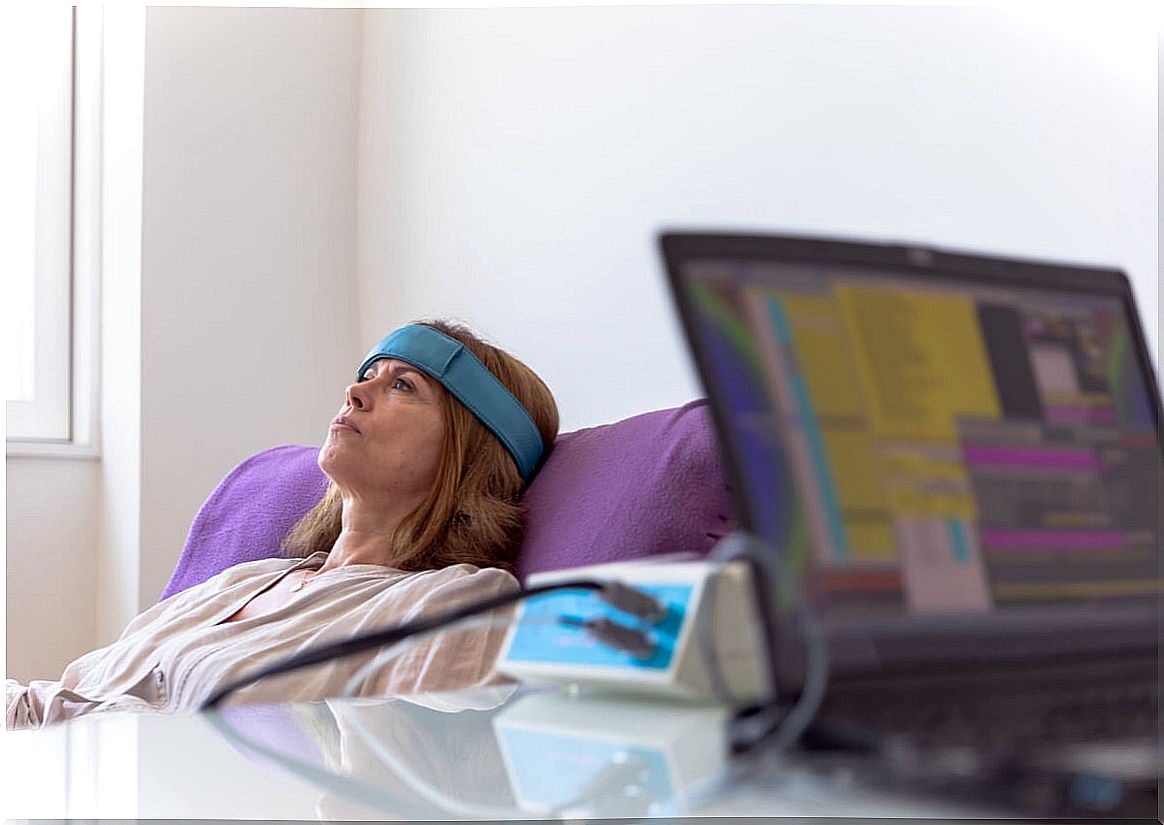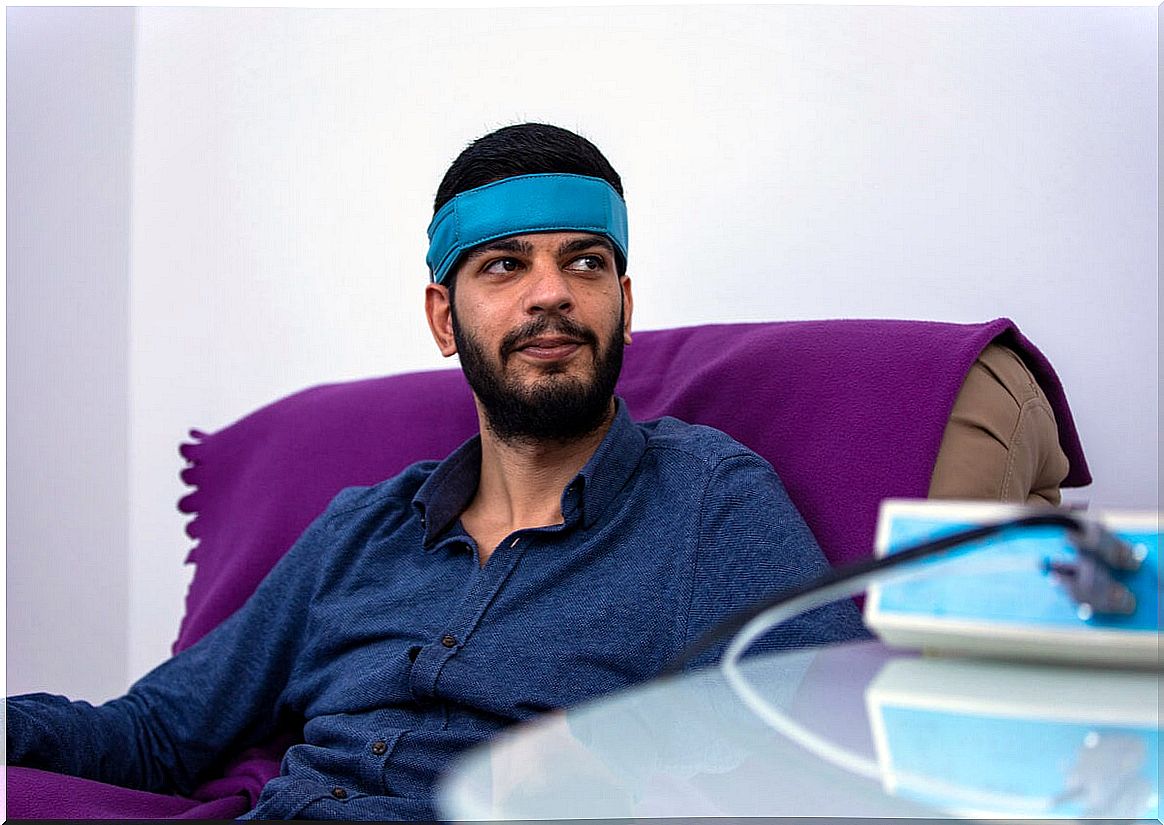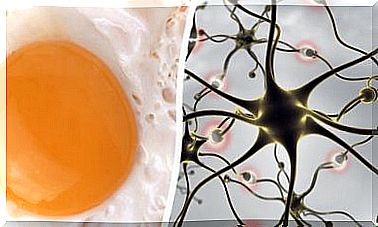Biofeedback: Combat Stress Through Relaxation Techniques
Does the term “biofeedback” sound like nothing to you? Well, in this article you are going to discover how interesting it can be for you to start managing your stress in a better way.

Doesn’t the term biofeedback ring a bell ? The truth is that not much has been said about it, and yet its benefits are interesting. If you’ve been under stress for a while and nothing has worked for you, maybe it’s time to give it a try.
Biofeedback can help you, but why was this concept chosen? To which it refers? It is a type of therapy that uses sensors. These connect to your body and what they do is measure body functions to determine the level of stress you have.
How does it help you? It allows you to better know how the body works so that you can manage stress. Let’s go much deeper now.
How does biofeedback work?
Biofeedback works very simply. There are sensors that are placed in specific places on your body, for example the earlobes or the scalp. The important thing is that they are in contact with the skin.
There is something very interesting and that is that you will be an active subject. What does this mean? Well, biofeedback is not a test in which you do not participate. In this case, you will see the results shown on a screen in real time so that you can be aware of how you are reacting.
It is for this reason that St. Jude Children’s Research Hospital emphasizes that this is an interactive process in which you get to achieve a connection with the body that you have never achieved before.
Biofeedback methods
Biofeedback methods are tailored to individual needs. Depending on the health problems you are having, one or the other will be recommended so that the result is the best.
Therefore, before submitting, it is advisable to conduct a personal interview to find out what you need. Well, stress can affect you in different ways.

Brain waves
This is one of the recommended biofeedback methods if you tend to suffer from migraines or headaches caused by stress. The sensors will be placed on the scalp or temples and what you will see will be brain waves thanks to an EEG.
It is an interesting way to find out how stress affects the brain. It is quite amazing!
Breathing
Another method focuses on breathing if stress prevents you from having adequate breathing dynamics or you suffer from the sensation of suffocation. The sensors are usually placed on the abdomen and chest to see what the pattern and rate of breathing are like.
Heart rate
A heart that beats too fast (tachycardia) can find answers in biofeedback. With the sensors arranged on the chest, the lower part of the torso and the wrists you will be able to know how your heart rate is and the variations it presents. It may be that before the stress hits your heart begins to beat more frequently, getting ahead of you.
Muscle contraction
Cramps, tense muscles, contractures. Stress can wreak havoc on the body, and biofeedback addresses this as well.
The sensors are placed on skeletal muscles to closely observe the electrical activity that is causing the muscles to contract.
Sweat gland activity
In biofeedback you can observe how the activity of your sweat glands is. As you well know, due to stress you may perspire more than usual or sweat a lot.
With the sensors that will be placed around your fingers or in the palm of your wrists, you will be able to analyze how your body responds to stress.
Temperature
Finally, another of the biofeedback methods is to measure the temperature, since with stress it tends to go down or, sometimes, to go up. How will your body respond? You can discover it with the sensors that will be placed on your fingers.
Benefits of biofeedback
Now that you know a little more about biofeedback, surely you have been able to realize its benefits. But it is better that we treat them in more detail in this section. The exposed methods help you get to know your body better and how it responds to stress.
What can this do for you? Well, to learn to anticipate an episode of stress or anxiety, calm your breathing, take a walk to clear yourself. This way you will avoid what you already know is happening to you, from rapid heartbeat, shortness of breath and nervousness to headaches.
Also biofeedback it is beneficial for you to solve your sleep problems, nausea and better manage incontinence (urinary or fecal) sometimes linked to stress. Some studies account for the effect on constipation. Knowing your body will help you to be more aware of the necessary management.

Contraindications to biofeedback
Despite all the advantages that this type of therapy has, it is clear that there will be contraindications. From the Mayo Clinic they warn of the following:
- In the event that you have a skin disorder, the sensors used in this type of therapy can generate an allergy. Therefore, if you tend to suffer from eczema or dermatitis, it is better to ask your doctor first if it is safe for you.
- If you’re having a heart rhythm problem, biofeedback may not give you promising results on how you respond to stress. In this situation we also advise you to discuss it with your doctor.
Choose a biofeedback professional
Are you interested in this technique? Well, choose the professional well, the one who must be a licensed therapist. Make sure you can answer each and every question you may have about how the procedure is going to be performed.
The truth is, biofeedback has many benefits. If you’ve already tried it, how did the experience go?









